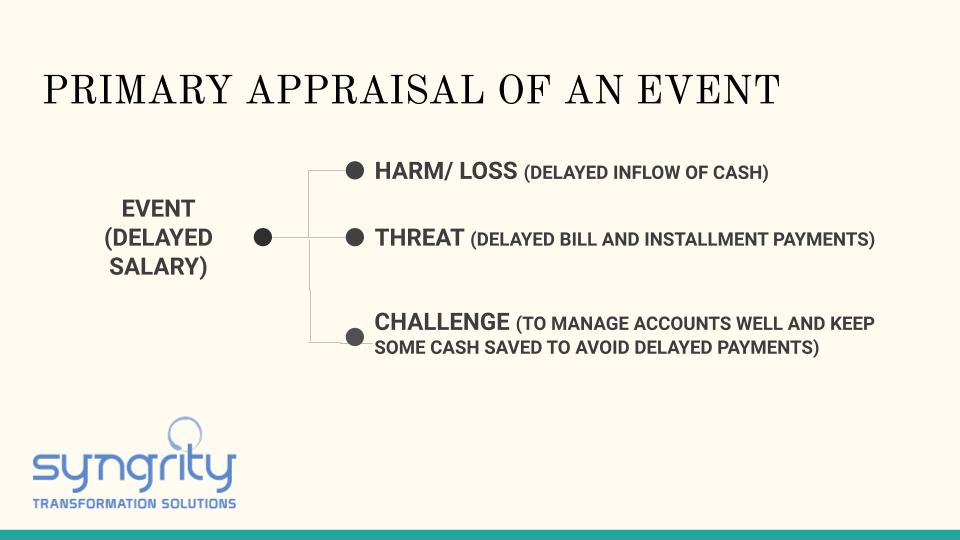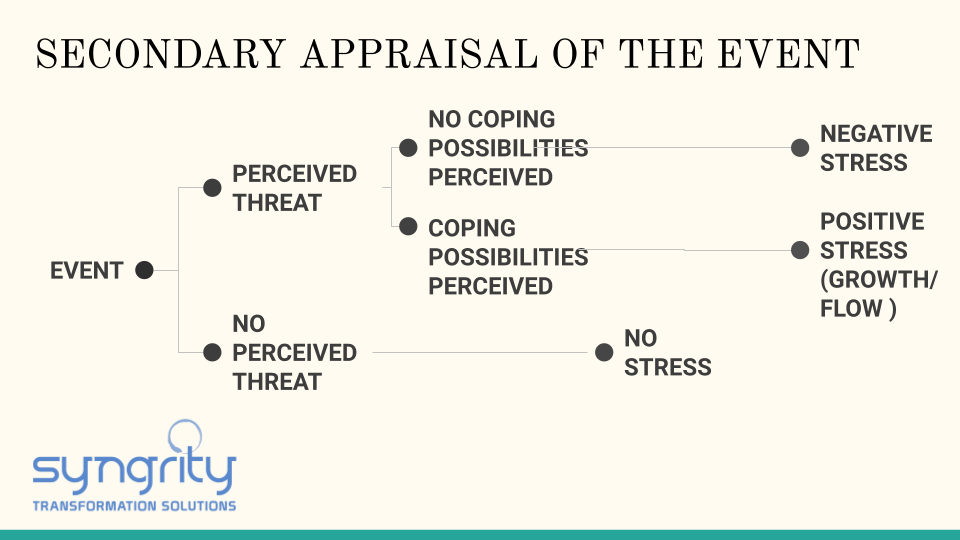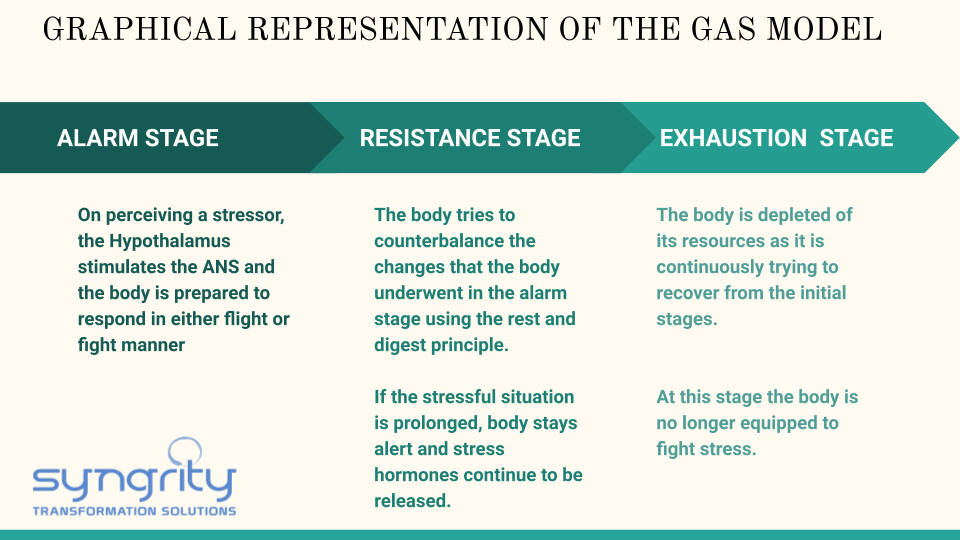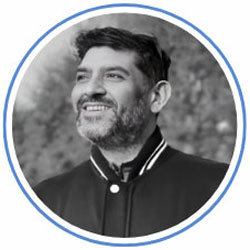What makes a situation stressful? Why is a particular situation stressful for person A and not so for person B? The answer to this question is perception. Perception of a situation as stressful or not rather than the situation itself makes it stressful.
To understand the mechanisms underlying this difference, one needs to know about the processes and models of appraisal at work when a situation is perceived to be stressful. This brings us to our third blog of our research-based series – KOKORO – the heart of Stillness.
Whenever there is a change or imbalance in the environment, one gauges the impact of the change and the available resources to face the situation and strike balance again. When the resources are evaluated to be sufficient; the situation does not seem stressful. If the resources are evaluated to be insufficient, the situation becomes stressful.
The following are some models that provide a detailed account of the same-
Transactional Model of Stress and Coping
According to Lazarus and Folkman, Stress is a result of the interaction/ transaction between an individual (his/her physiological, neurological, cognitive and emotional systems) and the environment. When there are changes in the environment they have a direct impact on the individuals and such interactions, where the change demands exceed coping resources are stressful. Therefore, the perception of the event becomes more important than the event itself.
Lazarus and Folkman have postulated two levels of appraisal.
PRIMARY APPRAISAL – evaluation of the change event as
Loss/ harm – the change/ event has already caused
Threats – potential future harm
Challenges – how can we learn/ gain from such experiences.
SECONDARY APPRAISAL– this is the second stage of evaluation where the individual gauges his/her resources to cope with such changes.
Example– A scholar has to defend his/her thesis after three months. If the scholar perceives this timeframe to be sufficient for him/her to complete the work then situation is not stressful. On the other hand if the scholar frets about three months being an unfair deadline, defending his/her thesis becomes stressful.
This Model helps us understand how the individual constantly interacts with the environment and any change elicits evaluation at two levels; one of the change being potential threat and what can possibly be learnt from such an experience. Second level of evaluation is of the individual’s coping mechanisms and resources. This helps us understand the power of perception and how our way of thinking influences our interactions with the environment and its impact on us. This model integrates the personal and environmental issues and focuses on cognitive appraisal to evaluate the threat posed by the encounter, which can lead to stress.
Another model that explains the role of perception in experiencing stress
GAS – General Adaptation Syndrome
Hans Seyle, who first coined the term Stress, later on developed GAS – General Adaptation Syndrome. The GAS model is a three stage physiological response of the body when it is exposed to stress. Selye explained it as the body’s way to adapt to a perceived threat to better equip the body to survive.
The three stages are :-
- The alarm Reaction Stage– When the Hypothalamus perceives any stressor, the ANS is stimulated and the body is prepared to respond in either flight or flight manner.
- The Resistance stage– In this stage, the body tries to counter balance the changes that happened during the alarm reaction stage using the rest and digest principle. However, if the stressful situation is prolonged, the body stays alert and stress hormone (Cortisol) continues to be produced and released. This stage is characterized by increased irritability and decreased concentration.
- The Exhaustion stage– At this stage, the body is depleted of it’s energy recourses by continuously trying to recover from the initial stages. At this final stage, the body is no longer equipped to fight stress. Anxiety, depression, feeling unable to cope and burnout characterise this stage.
This model takes us through the three stages at which our body perceives a certain situation as stressful and then uses the available resources to cope up with the stress. This can be understood with a common example we either have personally faced or heard of-
Alarm Stage– Computer system getting shut down suddenly, without having the current document saved.
Resistance Stage– Quickly plugs in the charger. Thinking about the work done and getting anxious about the information getting lost.
Either the system starts to function again without any information/data getting lost and the individual reaches a state of equilibrium or the individual enters the third stage-
Exhaustion Stage– the system starts after plugging in the charger but all the information is lost (stressful situation is prolonged). The individual continues to be stressed and develops aches and pains in the body and is unable to rest. At this stage all the resources to cope are exhausted and the individual is unable to concentrate and work as efficiently as before and develops physiological, cognitive and emotional issues.
The models and processes discussed in this blog are based on empirical data and research and have clinical applications. An understanding of these models helps create a basic framework of guidelines that could help individuals in maintaining healthy stress levels. After having a brief understanding of what causes stress to us (http://www.syngrity.com/what-causes-stress/), this blog helps us to know how our body reacts and responds to such stressors. Once we acknowledge the underlying process, we could manage them and maintain a healthy and balanced level of stress.










 MALATI VASUDEVA
MALATI VASUDEVA VIKRAM BADHWAR
VIKRAM BADHWAR PRIYANKA KUMAR
PRIYANKA KUMAR SUMAL VARGHESE
SUMAL VARGHESE















Veey useful
This was a great read! Informative and insightful.
The way it all has been explained and the information given about stress and it’s appraisal is very helpful! We live in an era where we focus on every aspect of our health but our mental health and it’s really amazing to receive help in the form of these amazing blogs!
Very useful and informative research based article which helps to manage stress.
Well defined stress stages, good to know that it can be managed by knowing the stage and cause of stress
Good Article
Useful content
Extremely useful , precticle n informative article… ..
How can this Model be utilised to prevent Stress during war .As much has focused on perception ?
Hi Rajni! Thank you for asking this question, we really appreciate it. I would like to answer your question in two parts; first about
prevention of stress and secondly about perception of stress. Stress is inevitable as everything is not under our control. As we mentioned in our earlier blog (http://www.syngrity.com/stress-what-is-it/) depending on our availability of resources to combat a stressful situation, it either elicits positive stress, negative stress or no stress at all. Secondly, a situation of war is a global stressor but depending on how closely one would be impacted by the situation it is prceived differently by people in different roles. For example, a soldier would perceive war differently than a soldier’s family member, a pertson in authority and the citizens of a nation. Hope this is a satisfactory answer to your question! Please feel free to reach out to us at contact@syngrity.com in case there is something that you would want to share.
The contents are excellent and are useful in one’s life.the stress can be easily managed by reading such contents about stress.one can manage stress easily by knowing causes of stress.
The example was very relatable